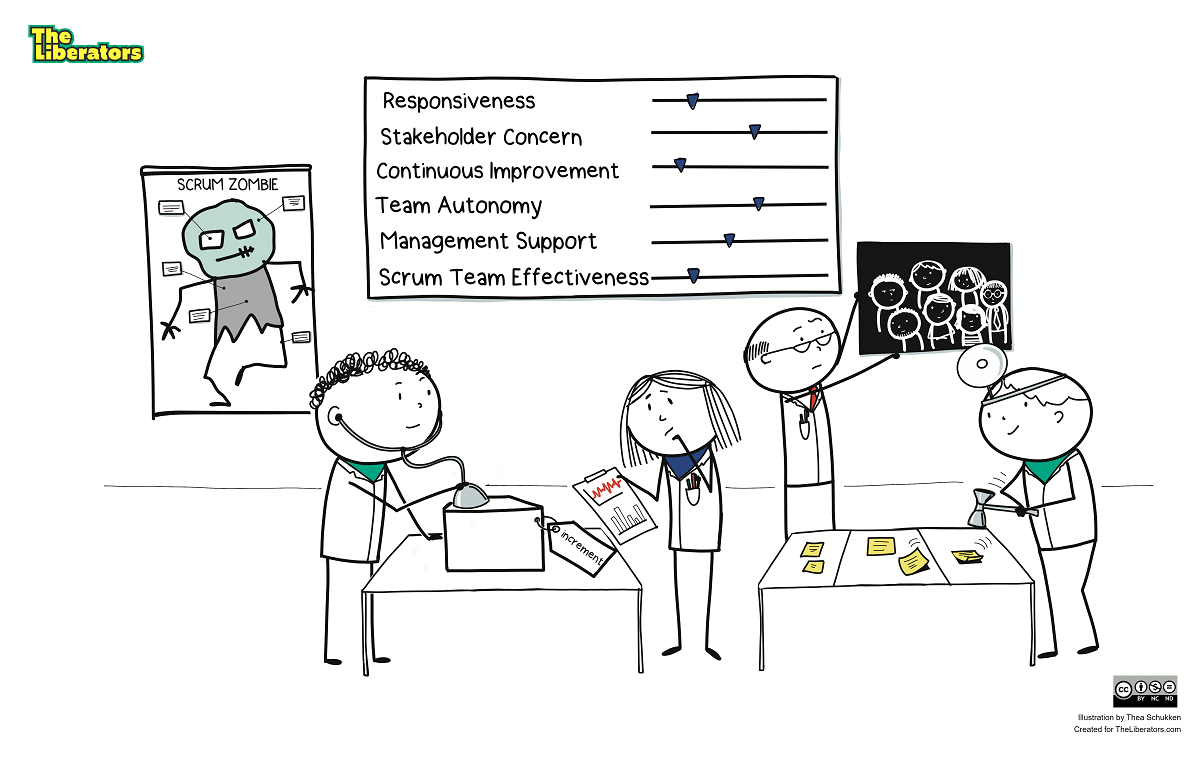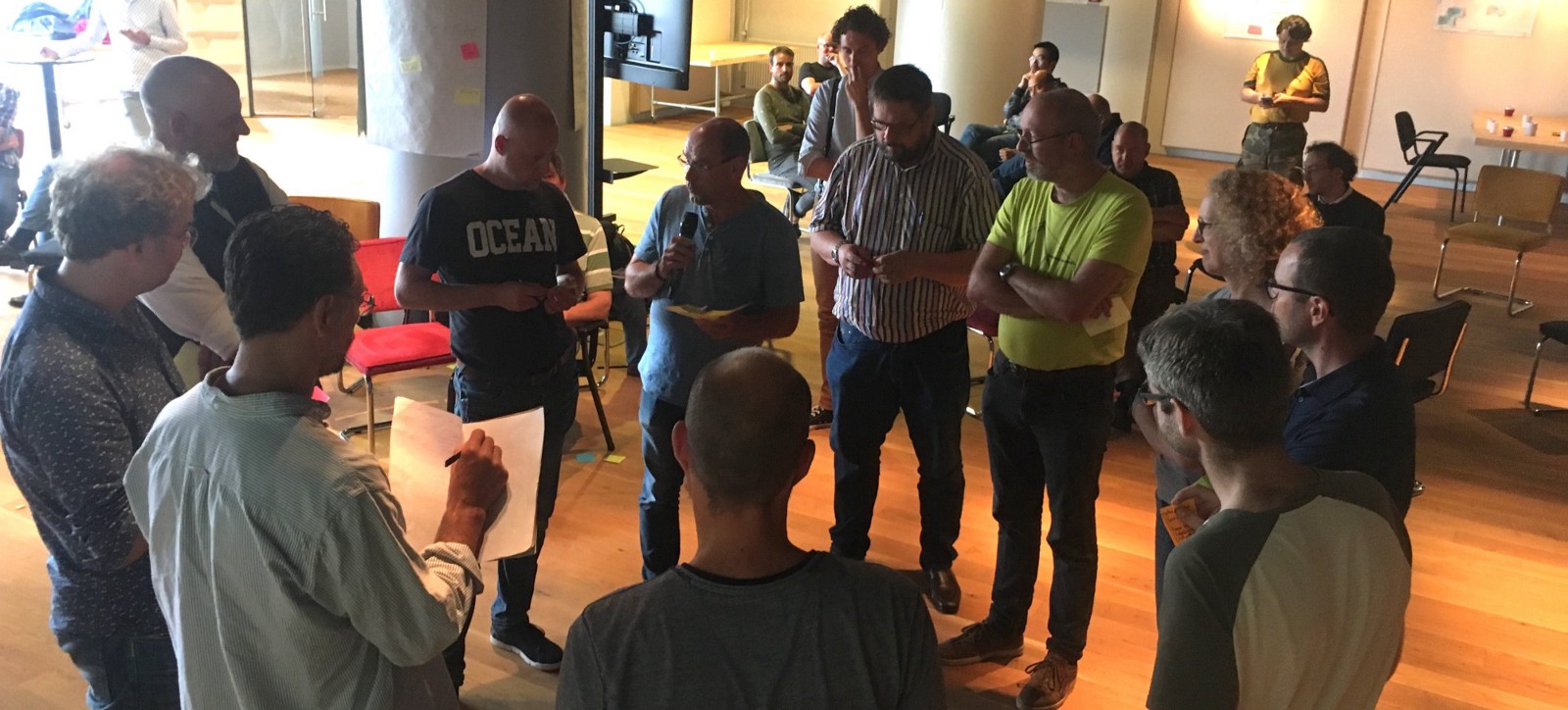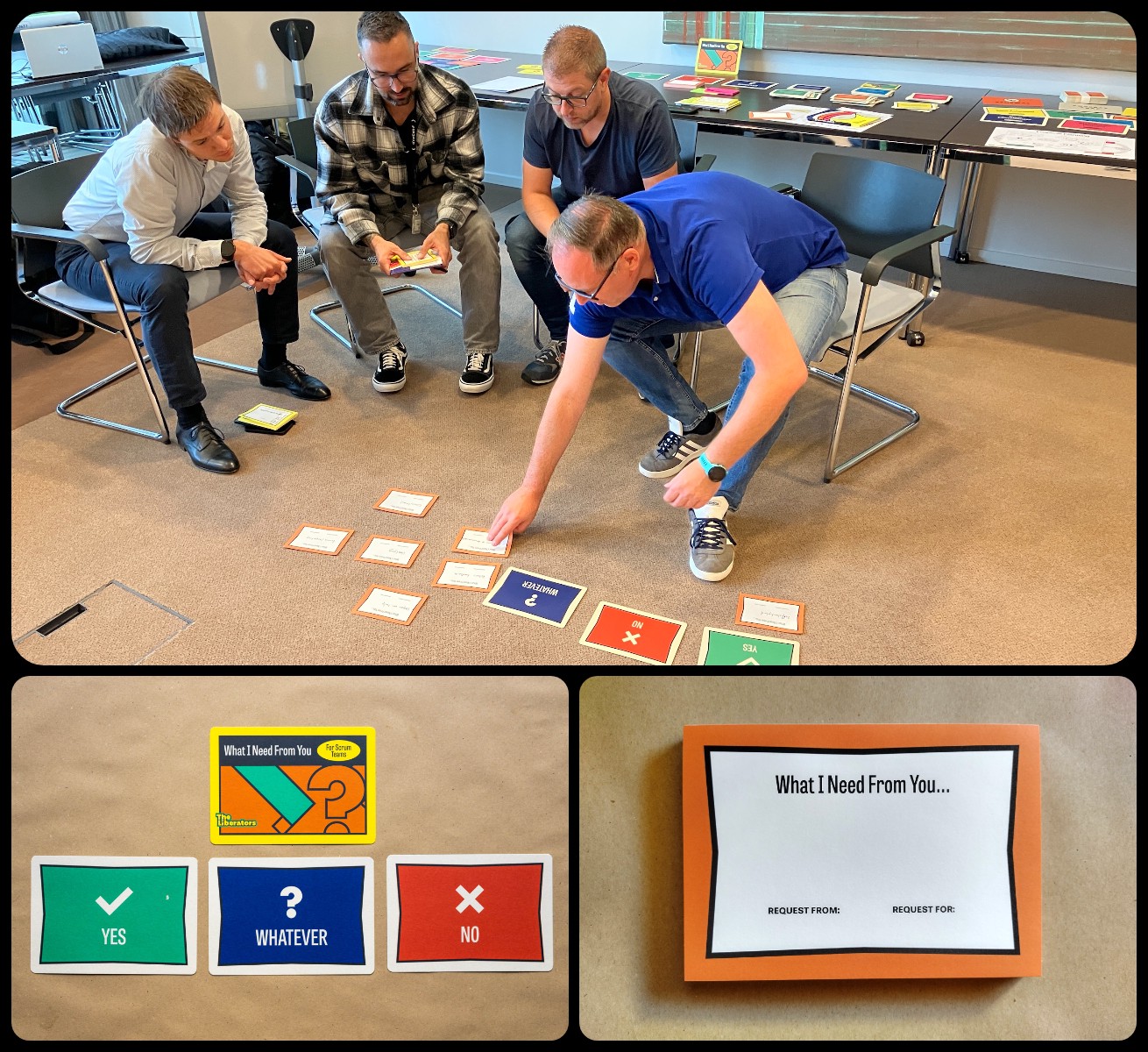
It’s easy to complain when you don’t get what you need from others, but how clear was your request? How clear was the actual response? It isn’t easy to clearly express what you need from others to be successful, and it isn’t easy to give a clear response when you are the recipient of such a request.
Vague communication can easily lead to frustration and blaming, and that’s unfortunate because self-managing teams often need a lot from others to be successful. The following experiment gives teams the opportunity to clearly express requests for help and give an unambiguous answer to the requests that come their way. It establishes more effective communication patterns that make a lasting impact. It is based on the Liberating Structure “What I Need From You”.
“Give teams the opportunity to clearly express requests for help and give an unambiguous answer to the requests that come their way.”
Required skill
This experiment requires tight facilitation. You may experience tension as this experiment makes things real (in a good way).
Impact on survival
This experiment is helpful in the moment but can have a lasting impact on how people communicate within the organization.

A group of representatives from various teams and functional departments engaged in WINFY (the various represented teams and departments surrounding the group). Note that the inner circle was a bit larger than we hoped, resulting in quite a number of needs. Try to limit to 7–9 groups.
Steps
To try this experiment, do the following:
- Invite the Scrum team(s) and the other functions that contribute directly or indirectly to releasing a product increment. This can include maintenance or infrastructure teams, human resources (HR), marketing, or management. Explain that the goal is for each function to ask others for things they need in order to be successful. They will then receive a clear response on whether that request can be met or not.
- Ask the participants to form groups corresponding to the function in which they normally work. A Scrum team is one group, HR is another group, and so on.
- Ask the participants to make a list of their top needs from each of the other functions in the room. First, they are invited to do this individually (1 min), then mixed in pairs (2 min), then in groups of four (4 min). Finally, they gather with others from their group or function and reduce their collective needs to only the two most important ones (10 min). These requests are written in the form of “What I need from you is…” and should address a specific group. Give the groups additional time to discuss and refine their requests, about 5 to 10 minutes depending on their size. Ask them to be clear and unambiguous.
- Ask each function to select a spokesperson and invite them into a circle in the middle. Each spokesperson states their top two needs to the relevant spokespersons from other functions. When a need is addressed to a group, its spokesperson takes notes but doesn’t answer. It’s important that there is no discussion or clarification.
- When every request has been made, the spokespersons return to their groups and discuss their answers to each request. Answers are purposefully limited to “Yes”, “No”, and “Huh? (We don’t understand your request)”.
- The spokespersons gather in the circle again. One by one, each of them repeats the requests that were made to them and their answer. Again, there is no discussion and no elaboration.
- Depending on the situation you can do additional rounds of making requests and giving answers. The goal is to make (painfully) clear how crucial it is to be specific when asking for help. That’s why we stop after one round. Do another round when you are certain that not being able to ask new requests causes more harm than the learning of not being able to ask again.

WINFY helps Scrum teams to clearly express their needs and for others to clearly respond to those requests. This sidesteps the corporate jargon that often muddies such requests, and is essential for groups to be successful. These cards are part of the product kit “Unleash Scrum In Your Organization”.
Our findings
- The goal of this experiment is to practice making precise requests and giving unambiguous answers. This is not a place for discussion. If requests are unclear, it is a sign that the group needs to work on being clearer in their communication.
- Some tension during this experiment is natural as groups express clear requests and (finally) get clear answers. Recognize and accept it when it happens.
- Encourage participants to continue communicating their needs outside of this gathering using the same format. If a request was not understood or denied, try asking differently.
- If you see members of a group complaining about and blaming other people, ask them what it is they need specifically and whether they have communicated this need adequately.
Learn more? Check Out Our New Product Kit!
Scrum impacts the entire organization. To unlock your Scrum team’s superpowers, improvements are necessary within and especially around teams. We created a new product kit to help see the bigger picture. It’s filled with materials to diagnose Scrum in your organization and unleashes its potential with Scrum.
The beating heart of this kit is “Panarchy”. It is the most powerful way we know to collaboratively analyze the system in and around Scrum teams. With the Impediment cards, you can visualize where support is needed. It isn’t always easy to transition from knowing where the problems are to getting the help you need from the people who can give it. So we included “What I Need From You” — the experiment described in this blog post — to drive these conversations.
We also included a huge stack of Quick Tips that we created with our community. Even in environments where everything seems stuck, these cards provide many practical and simple ways to trigger big change through many small steps. You can capture all these improvements on the 15% Solutions blocks we included.
